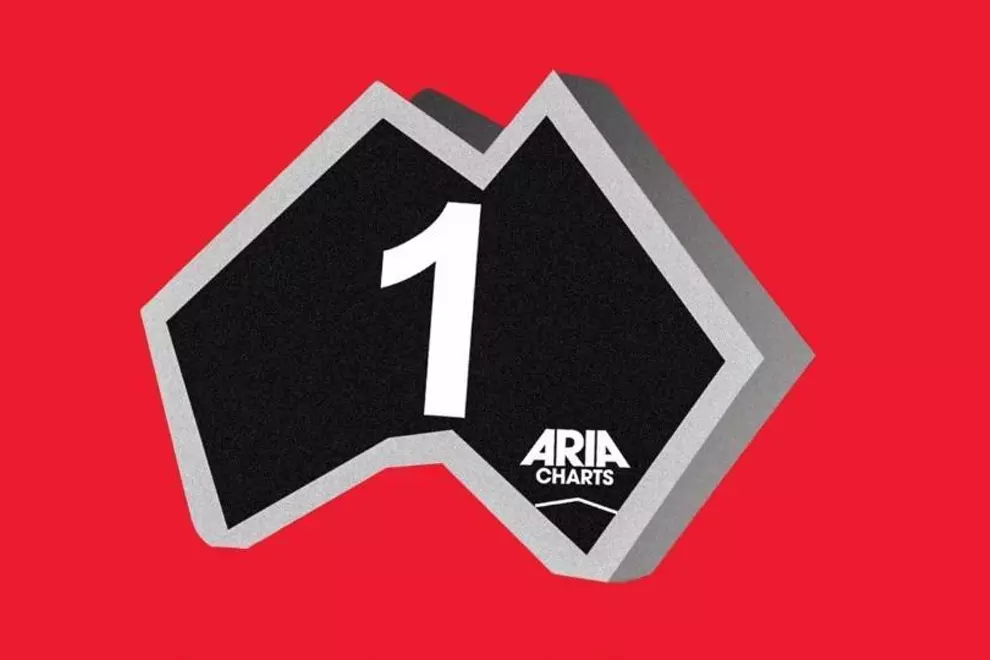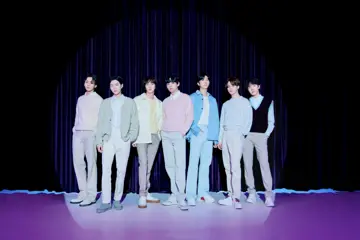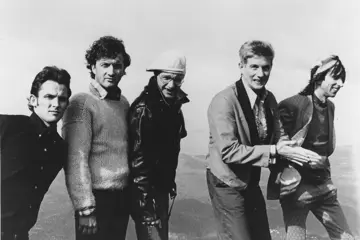Without a doubt, whatever way you spin it, the ARIA Charts in 2023 were a low point for Australian music in the charts. Never in history have we seen a year where not a single Australian album or song released in the chart year made the cut.
But do we have an Australian music problem? Or do we have a counting problem? Or a business problem?
One thing is for sure: heading back thirty years and comparing the ARIA Chart in 2023 with the ARIA Chart in 1993 is not an apples-with-apples comparison. In some ways, we’ve created a spiral of negativity by pretending that it is and it’s not helping Australian music.
Ignoring there’s an issue is also counterproductive, but if there’s one thing ARIA and the industry more broadly need to face in 2024, it’s fixing the “chart problem” so that the negative narrative it shows does not spin out to feed the more important and seemingly growing “investment in Australian music” problem.
Firstly, we need to look at what has changed. For decades, the chart was based on sales. It didn’t count when you listened to music; it counted when you made a purchase decision. At what point in time did the music industry’s marketing convince you to part with cash to make a bet that you would want to listen to that single or album for the rest of your life?
Don't miss a beat with our FREE daily newsletter
It seems strange to put it in those terms, but that was what the chart counted. It counted the success of marketing departments to convert a sale, not the consumption of music.
In 1993 (thirty years ago), the biggest album was The Bodyguard soundtrack and Whitney Houston’s big ballad I Will Always Love You was #2 in the singles chart. Meatloaf’s I’d Do Anything For Love (But I Won’t Do That) was also riding high, taking out the #1 single and #3 album (Bat Out Of Hell II: Back Into Hell). What bangers, right?
A little further down the albums chart, Kenny G and Michael Crawford were smashing it along with Bryan Adams, Billy Joel and John Farnham, showing that Mother’s Day and Father’s Day really count in a world where the charts counted marketing wins.
Does anyone seriously think that Kenny G’s Breathless album was being consumed anywhere near the level of, let’s say, Sonia Dada’s You Don’t Treat Me No Good, which dominated the airwaves, or Ugly Kid Joe, who were being pirated on cassette tapes in every schoolyard in Australia?
But in 1993, that wasn’t a problem because the charts reflected what we as an industry found useful. Lots of Aussies in there to keep the local label branches happy and good reports back to head office mixed with lots of massive international hits doing what they needed to do. When you have around four FM radio stations in each town (if you were lucky) and no internet, the ease of feeding those hits through when you need them was a far simpler job to have. The charts counted the purchase, and who really cared whether the record got listened to after that? Where’s the money in that?
The “chart problem” in some ways isn’t new. It’s old, and perhaps it’s just been uncomfortably fixed as a measure of society by representing what people genuinely listen to, not just what people buy. Let’s go back to 1993 and look at the Australian music that was in the end of year chart:
Peter Andre - Gimme Little Sign
Jimmy Barnes - Stone Cold
Dannii Minogue - This Is It
Toni Pearen - I Want You
Southern Sons - You Were There
Peter Andre - Funky Junky
Things Of Stone & Wood - Happy Birthday Helen
Hunters & Collectors - Holy Grail
John Farnham - Seemed Like A Good Idea
Diesel - Never Miss Your Water
AC/DC - Big Gun
Jimmy Barnes / The Badloves - The Weight
Frente - Accidently Kelly Street
Screaming Jets - Shivers
Toni Pearen - In Your Room
It’s not a bad list, but it's worth noting that only the first three of these songs were in the top 50. The rest were in the 50-100 list. Still way better than what we have in the chart now, but what would have happened if, back then, we were counting consumption rather than purchase decisions?
If half the chart included older songs that were being played and consumed as well as charts do today, then the bottom 50 would be cleaned out, meaning bad news for poor Toni Pearen.
Think back to 1993: If you went to a party, how much of what was being played was brand-new music? Chances are, you were listening to the radio, and they were playing the best of the ‘70s, ‘80s and ‘90s (unless you were listening to an oldies station, in which case you were listening to Jukebox Saturday Night with hits from the 50s and 60s). Or perhaps you put on a favourite CD, or your mate did a mix tape for you. If you were under 25 at the time, then the mixtape probably included all new music, just as someone under 25 now probably streams mainly new music.
If you were over 25 at the time, it was probably full of Pink Floyd, Billy Joel, Duran Duran or ABBA. God, even The Four Seasons were back in the chart when they released December 1963 (Oh What A Night) again and everyone grabbed the cassingle from Brashs. ABBA’s Dancing Queen charted again in 1992 because some bright spark at Polygram decided to release a CD single to go along with ABBA Gold. When the gatekeepers decided to let old music through, people lapped it up, just as they love classics now.
Today, every time you choose to stick the Best of Inxs on your headphones, it’s counting towards the chart.
This idea that everyone’s ignoring new music may well have some truth to it, but the real reveal of the current chart crisis isn’t that music tastes have changed; it’s that we can now measure them better without the control of gatekeepers who could manipulate charts with physical formats.
Over the last decade, as sales have made way for streaming, the charts, of course, HAD to change. The issue with the charts is that they are now a strange hybrid that is still evolving. In some ways, ARIA has done a pretty great job of managing a measured chart transition as the industry and technology for chart counting changed. But the transition has now occurred, and we need to decide what we want the chart to be so that the transition can be final and representative.
If the original aim of the chart - to count consumer purchase decisions - is still in place, then stream counting needs to change. Presently, paid streaming service streams are weighted higher than non-paid services. When that decision was made, it probably seemed like a commercial distinction worth making, but as time has passed, it’s obvious that it’s not the metric that determines listening intent.
If we are to go back to the original aim of counting consumer decisions, we need to remove ‘lean back listening’ from playlists and simply count the times that a consumer clicks on a particular song or album because they choose to hear it. That is a consumption/purchase decision, not whether or not you pay for a service. Easier said than done when you’re talking about multiple services willing to or not willing to share that level of data analysis. It’s doubtful that aim would even be possible without serious buy-in from streaming platforms.
Listening via playlists or curated radio on streaming services, depending on who you listen to, can make up 30% or more of listening, meaning that consumers have about as much choice in the matter as they do when they listen to the radio. They can choose to switch off, but they can’t choose the song.
Bizarrely, though, we’ve chosen to count people listening to playlists, algorithmically programmed radio stations and anything else you care to note online, but we still do not count terrestrial radio listening, which still accounts for a huge chunk of consumers’ interaction with music. Why? The argument has always been that you can’t mix apples and oranges, and a purchase is not the same as consumption. Now that the ship has well and truly sailed, we’re in a strange position of counting some consumption but not others, which is hurting Australian music if the Australian consumption we choose to ignore is doing better than on the rest of the platforms.
Radio, where Australian music has a quota and must be played (whether it’s hit or large enough, etc., we’ll leave for another day), is not being counted. A fairer, more accurate picture of what is being consumed would emerge if radio listening was included.
Airplay has been counted in the US charts for decades, but Australia has followed a different path.
“Nobody reads the charts, so they are irrelevant anyway, so why even bother with the fix?” That’s where the argument often goes. Well it’s not about reality, it’s about sentiment, because even if consumers don’t care, vibe matters to the industry. WE count our wins and how much more of a spring would be in our step turning up to our jobs in this industry if we looked at real success in a chart rather than pretending a #1 album on pre-orders that disappears the next week is an achievement because we did a “strong pre-order campaign” by releasing on 5 different colours of cassette tape?
We’re all in the conversations. “What do we do about Australian music?” “Is it even fixable?” People in major labels are sitting there right now, deciding whether to invest in local content, looking at numbers that show it’s not working, and charts are part of those numbers. All year, we’ve had artists like Dom Dolla, Luude and Budjerah sitting just outside the area of the chart where people take notice. If they were 10 or 20 spots higher because radio airplay came in from the cold and joined their streaming brethren, would that make a difference to sentiment?
If Troye Sivan or The Kid LAROI were consistently top 10 finishers rather than top 20 finishers based on a more accurate consumption count, would that give us a more accurate picture of where they currently sit? Even for heritage artists, would we see more Dragon or Boom Crash Opera in the charts alongside the Goo Goo Dolls if those listening on Gold FM or Triple M were counted as consumers, too?
The ARIA Charts are at a crossroads. It needs to be decided whether they are going to go back to their roots and count ‘purchase’ decisions (in which case a massive overhaul to remove ‘lean back’ listening is required) or they need to go all in on being a consumption chart (in which case a massive overhaul to include as much consumption as possible and re-look at the weighting is required).
If we’re still staring at the same barren charts after that process has been done, then we can hit the panic button. But until we are sure of what we’re trying to measure and understand why, it’s hard to see where the real issues lay.
There’s no question that Australian music is in a rough patch right now; partially, our charts also reflect that. Investment is at an all-time low, and industry sentiment is down there with it. In 1993, the one thing we’re also ignoring was that there were about a dozen majors and significant independent labels, all with solid and large Australian rosters being invested in. They didn’t put out one single, have it not work and go back to rely on their international rosters. They put out Australian music week in, week out, and actually invested in it rather than just “testing the waters” (modern music industry code for signing and releasing something but not doing any marketing in the hope that lightning strikes and it accidentally goes viral). The one in seven (or one in ten, depending on who gave you the old rule of thumb) rose to the top and paid for the rest.
Perhaps in a world where globalisation means Ed Sheeran, Taylor Swift or Harry Styles ‘just happen’ in this territory without having to spend the money breaking them, it’s harder to justify to head offices that Australian music should be invested in. But goddamn, it’s even harder when the public yardstick of success is broken.
There are serious Australian music winners out there. The Kid LAROI, Troye Sivan, Vance Joy, Ocean Alley, Dean Lewis, Middle Kids, Dom Dolla, Spacey Jane, Luude. Even our current cover artists Vacations.
These are all artists with serious international success. In 1993, it might have seemed like Australian music was in a better place if the chart was your bible, but the real-world financial success of the artists listed above vs the success of artists like Toni Pearen, Southern Sons, Things Of Stone & Wood and Frente is something to take pause and consider. I’d rather Troye Sivan’s bank balance than Toni Pearen’s (sorry Toni, I actually do love the Intimate album. It deserved more). Perhaps we don’t have an Australian music problem; we’ve got a counting problem.
There’s a seriously good argument that, globally, Australian music has never been in a better place. What we’re seeing is a crisis in label investment and a business model problem where it’s difficult to invest in a domestic market in a smaller territory - particularly when artists and managers don’t want to sign long-term deals (and any wonder given they’ve been burnt for decades?). But in the 60s and early ‘70s, when the old guard like Mushroom broke through and put Australian artists on the map, Australian music was in a worse place than it is now. It took vision, gut feel, peculiar business modelling and passion.
Australian music isn’t going anywhere. If label investment does, then commerce will find a way because, ultimately, Australian listeners WILL find resonance with Australian stories and songs. Troye Sivan, Vance Joy and Dom Dolla don’t give a shit about your ‘chart problem’. They’re just getting on and doing it. Where they are on the chart is not hurting them; it’s hurting the industry more broadly.
Let’s at least give the next Michael Gudinski a head start by counting our successes correctly, admitting that the ARIA Chart looks the way it does because of the way we’ve chosen to count and get on with creating a chart that works for us, not against us.















